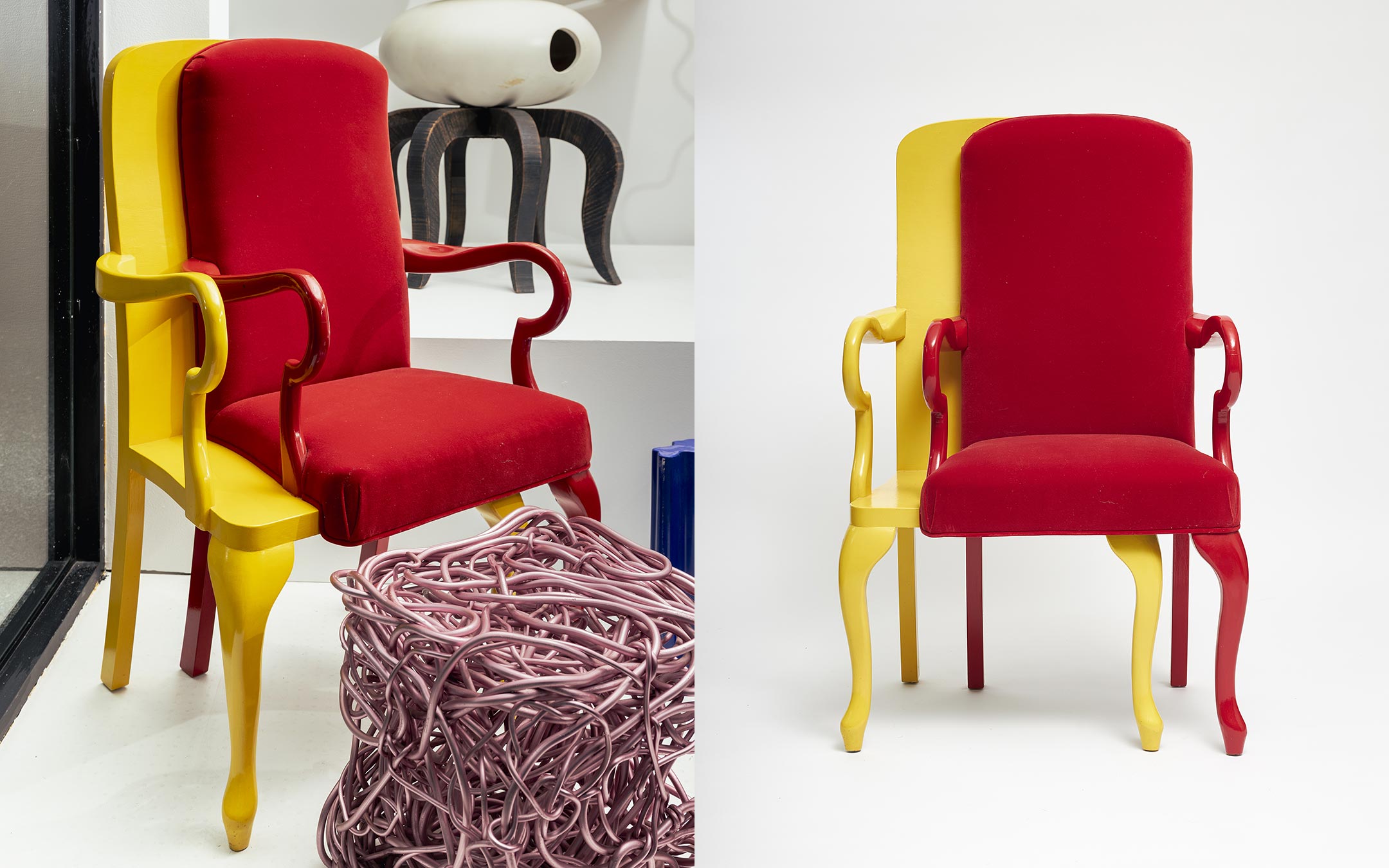“Lower Manhattan in the 70s and 80s was a crucible of style, colour and form, and of people and ideas: it was alive,” says Rick Kaufman, co-founder of the historic Art et Industrie gallery. The lower region of Manhattan, New York was often portrayed by mainstream cinema as dazzling, delinquent, and dauntless in the 70s.
Synonymously known as Downtown Manhattan, it was then a compelling mosaic of a city-wide financial crisis, a popping art scene, emerging industries, and abundant creative impulses. Reminiscent of the times when the United States was being revolutionised, staring straight into the face of a cold war, a handful of art creators conceived a debatable design language of functional sculptures and non-functional furniture design. In the 1970s and 1980s, many creative consecutions were shaping up as a resounding voice of rejection of the modernist trope ‘form follows function’, effectively united by Rick Kaufman and Tracy Rust’s iconic gallery Art et Industrie. Since its inception in 1977, the art gallery has marked its presence in numerous locations throughout Downtown Manhattan. It was an expressive cultural hotspot for designers at the forefront of the Design Art movement of the 1980s. Though it is now closed, the gallery is remembered as one of the most iconic art galleries in New York for showcasing the best in unconventional art and design.
Superhouse, helmed by Stephen Markos and Magen H Gallery, is now presenting its latest exhibition ‘Return to Downtown’, featuring historical works of 12 designers from the gallery Art et Industrie. The exhibition will be open for public viewing from September 16, 2022, to October 30, 2022, at the Superhouse Vitrine. While some of the works on display are from the personal archives of designers Terence Main, Carmen Spera, Terry Fugate-Wilcox, Laura Johnson Drake, Elizabeth Browning Jackson, James Hong and Howard Meister, others are from Magen H Gallery’s collection of contemporaneous functional art.
The design language of New York City from 40 years ago was characterized by the radical pop, gestural, minimal, industrial and techno designs. One such work from Kaufman and Rust’s gallery is Terence Main’s iconic lacquered wood ‘Red Twiddler’ chair. Designed in 1988, the chair captures the essence and importance that Main put in biomorphic elements alongside the generative and destructive cycles of nature. The chair design resembles a bright-coloured long-backed wooden throne with animist motifs and shapes almost immediately transporting the observers to the utopian locale of a tribal royal kingdom.
The Red Twiddler chair is platformed alongside Main’s original pieces from the Art et Industrie – the Queen Anne Chair, which is a fun and pop-inspired take on the original royal chair named after the Queen Anne of England (1702) and a table lamp. Under the moniker Main & Main, both pieces were originally designed by Main with his life and work partner Laura Johnson Drake.
Celebrating and paying homage to the kingpins of the Art Design movement, Magen H Gallery also brings on display the furniture pieces by iconic graphic and product designer Dan Friedman, comprising the moulded plastic ‘USA Tables’ in a patriotic colour palette. Designed in 1993, the tables were Friedman’s call out to a country that he viewed as ‘problematic’ and in the shape of places that he identified as the ‘trouble spots'. Further on display are the works of the legendary designer and artist Forrest Myers, who is known to have adorned New York’s Soho district with a public art installation, the Wall. In collaboration with Kaufman and Rust’s, Meyer showcased his illustrious contributions to abstract expressionism through art and design in New York. He ventured into the world of sculptural designs with a balance of chaos with structure, which can be observed in his metal-coiled ‘Pink Tuffit’. The sculpture-cum-seat looks like a figurative version of a creative and confused ‘state of mind’. Complimenting his glazing Pink Tuffit seat is his anodized aluminium altarpiece, showcasing his skills as a master metalworker.
Richard Snyder’s ‘Cabinet of the Ancient Squid’ adorns the gallery space as another relic of a functional sculpture from the art movement that takes the shape of weirdly intriguing furniture belonging to a fictional character. The sinuous high cabinet was designed by the industrial designer in 1990 and is one of the earliest takes on creative design in an unconventional form. Wandering across the exhibition that spans both of Superhouse’s gallery spaces, the observers also come across the ‘Gloria Bench’ by Elizabeth Browning Jackson, who happened to be among a handful of women exhibitors at the gallery at the time. Her work has not been documented much but remains a powerful image of empowering women in art and design through the 1980s. James Hong’s rare pivoting cabinet and a multipurpose bookshelf drawing inspiration from the ancient Egyptian pyramids alongside Howard Meister’s P. Strut chair as a revolution against his family-owned business of mass-manufactured chairs and Rafael Barrios’ perspective-defying table also adorn the exhibition.

“Both galleries represent their time’s bleeding edge of functional art. It is an honour to be working with Magen H Gallery and the artists who launched their careers with Art et Industrie to bring this important collection of historical art furniture to Superhouse’s audience,” says Stephen Markos. The design exhibition offers a peek into the lives and works of some of the most important artists and designers belonging to the world of design while paying homage to the gallery Art et Industrie which stirred Downtown Manhattan with a transitional movement in art.
‘Return to Downtown’ will be on display at the Superhouse Vitrine from September 16, 2022, to October 30, 2022.






 Sign in with email
Sign in with email
















What do you think?